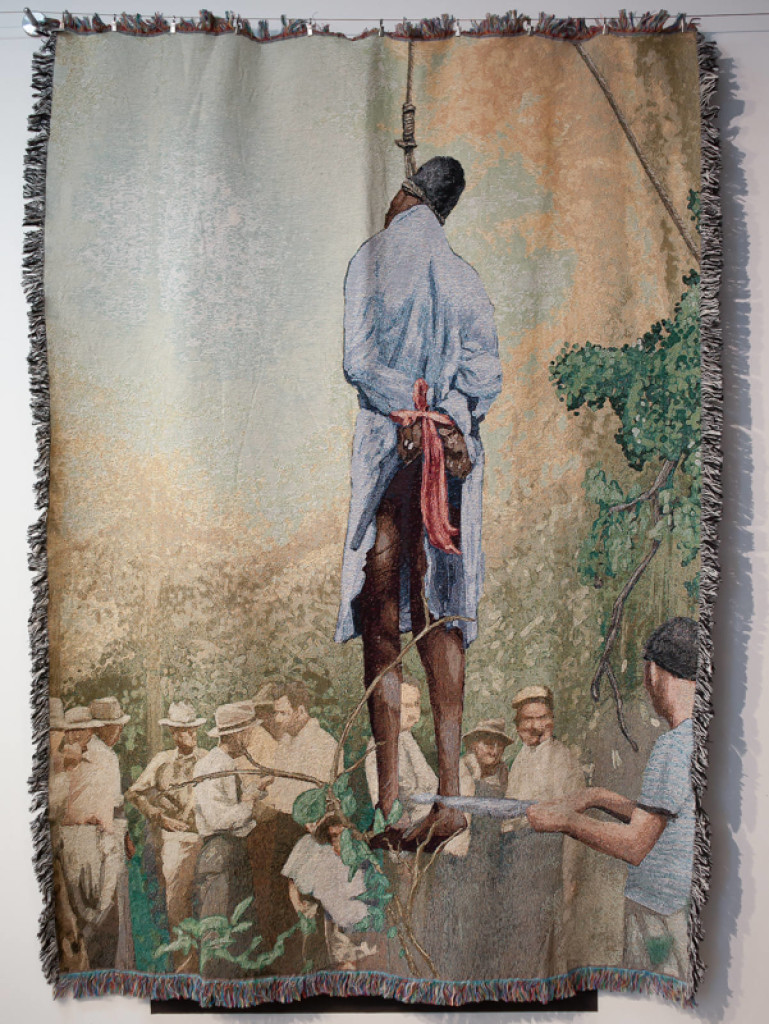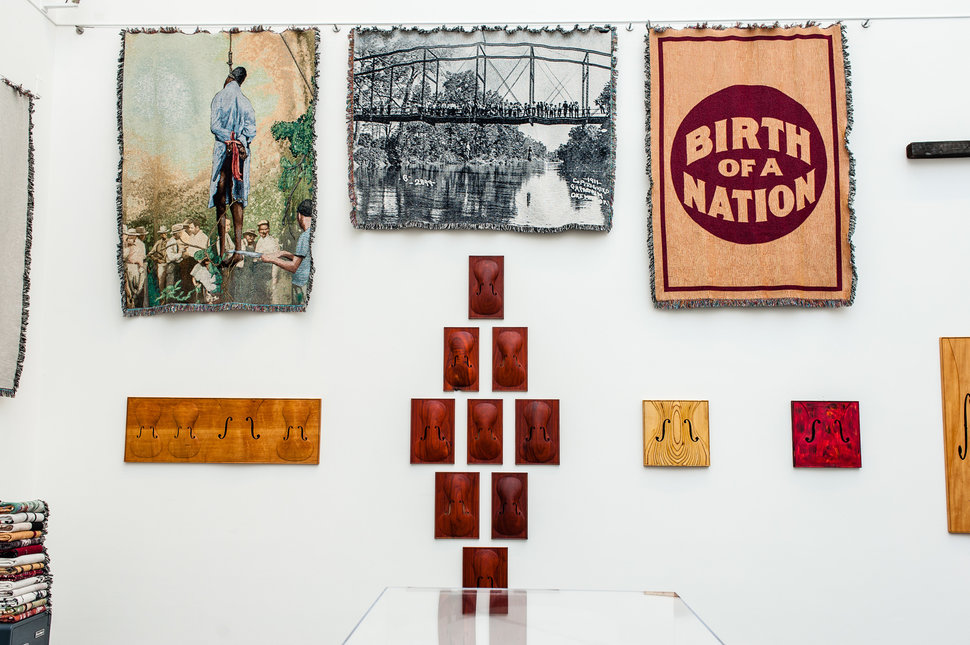
Paul Rucker
(Ongoing) Birth of a Nation Project, 2015.
About:
Paul Rucker is a visual artist, composer, and musician who often combines media, integrating live performance, sound, original compositions, and visual art. His work is the product of a rich interactive process, through which he investigates community impacts, human rights issues, historical research, and basic human emotions surrounding particular subject matter. Much of his current work focuses on the Prison Industrial Complex and the many issues accompanying incarceration in its relationship to slavery. He has presented performances and visual art exhibitions across the country and has collaborated with educational institutions to address the issue of mass incarceration.
The Birth of a Nation, 2015.
Exhibitions of his work include opportunities for community interaction and dialogue around these issues, via workshops, artist talks, and community dinners with facilitated conversation.
SEPTEMBER 15, 1963 – Birmingham Alabama (soundless Series) 2015.
Early on the morning of September 15, 1963, four members of the United Klans of America—Bobby Frank Cherry, Thomas Blanton, Herman Frank Cash, and Robert Chambliss— planted a box of dynamite with a time delay under the steps of the Sixteenth Street Baptist Church in Birmingham, Alabama, near the basement. At about 10:22am, 26 children were walking into the basement assembly room to prepare for the sermon entitled “The Love That Forgives” when the bomb exploded near Addie Mae Collins (age 14), Denise McNair (age 11), Carole Robertson (age 14), and Cynthia Wesley (age 14). All (4) girls were killed and 22 additional people were injured. (text Baltimore Museum of Art)

The lynching of W. C. or R. C. Williams, his body hanging from an oak tree, lower body covered with kitchen apron. Blood streaming down legs suggests castration. Onlookers include white men and young children. News Report of W. C. Williams Lynching: Lynch Law – Ruston, LA. The shot riddled body of negro W. C. Williams hangs from the towering oak tree less than 150 yards from where the murder and assault for which he was killed were ommitted. A mob of 300 persons administered lynch law after Williams admitted that he had clubbed mill worker Robert N. Blair to death and criminally assaulted his girl companion. The mob took Williams from the posse which had captured him after a three day hunt, strung him up to the tree, then riddled his body with bullets. Lynching in America is a chapter in our history that seldom gets addressed. Based on one survey, 4,742 African Americans were murdered by lynching between 1882 and 1968. Others were lynched as well, but not nearly in the same numbers. These included people of Caucasian, Chinese, Latino, and Jewish descent. There are similarities between death by lynching and the flood of shootings and killings by other methods in present day America. In sync with the extrajudicial quality of lynching, today’s murders often go unprosecuted, or, if they go to trial, often end in acquittal of the accused. The psychological impact of lynching remains with us today. People of color fear vigilante justice. These crimes frequently go unpunished, whether committed by citizens or by the police. (text Baltimore Museum of Art)



